Zi'an Xu
Swin MAE: Masked Autoencoders for Small Datasets
Jan 05, 2023Abstract:The development of deep learning models in medical image analysis is majorly limited by the lack of large-sized and well-annotated datasets. Unsupervised learning does not require labels and is more suitable for solving medical image analysis problems. However, most of the current unsupervised learning methods need to be applied to large datasets. To make unsupervised learning applicable to small datasets, we proposed Swin MAE, which is a masked autoencoder with Swin Transformer as its backbone. Even on a dataset of only a few thousand medical images and without using any pre-trained models, Swin MAE is still able to learn useful semantic features purely from images. It can equal or even slightly outperform the supervised model obtained by Swin Transformer trained on ImageNet in terms of the transfer learning results of downstream tasks. The code is publicly available at https://github.com/Zian-Xu/Swin-MAE.
Parotid Gland MR Image Segmentation Based on Contrastive Learning
Aug 26, 2022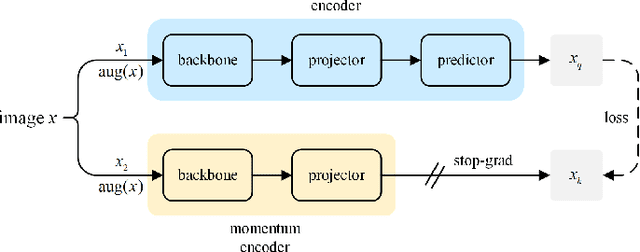
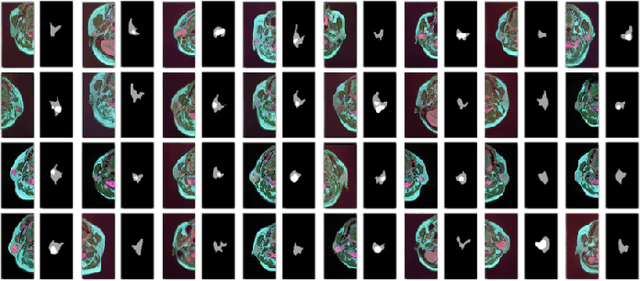
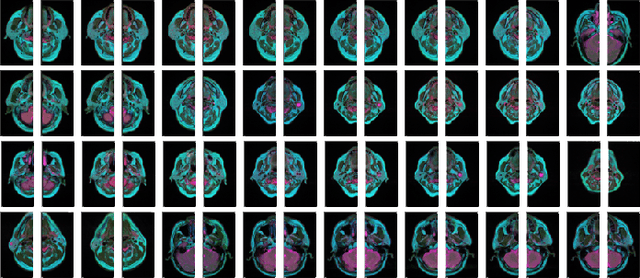
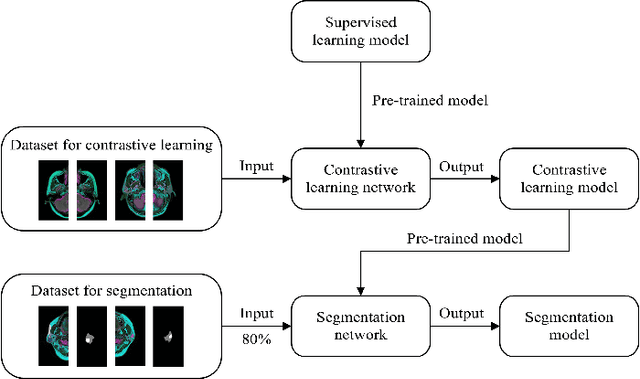
Abstract:Compared with natural images, medical images are difficult to acquire and costly to label. Contrastive learning, as an unsupervised learning method, can more effectively utilize unlabeled medical images. In this paper, we used a Transformer-based contrastive learning method and innovatively trained the contrastive learning network with transfer learning. Then, the output model was transferred to the downstream parotid segmentation task, which improved the performance of the parotid segmentation model on the test set. The improved DSC was 89.60%, MPA was 99.36%, MIoU was 85.11%, and HD was 2.98. All four metrics showed significant improvement compared to the results of using a supervised learning model as a pre-trained model for the parotid segmentation network. In addition, we found that the improvement of the segmentation network by the contrastive learning model was mainly in the encoder part, so this paper also tried to build a contrastive learning network for the decoder part and discussed the problems encountered in the process of building.
Parotid Gland MRI Segmentation Based on Swin-Unet and Multimodal Images
Jun 07, 2022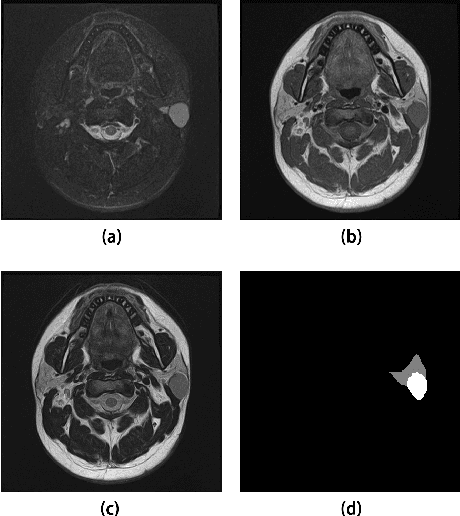
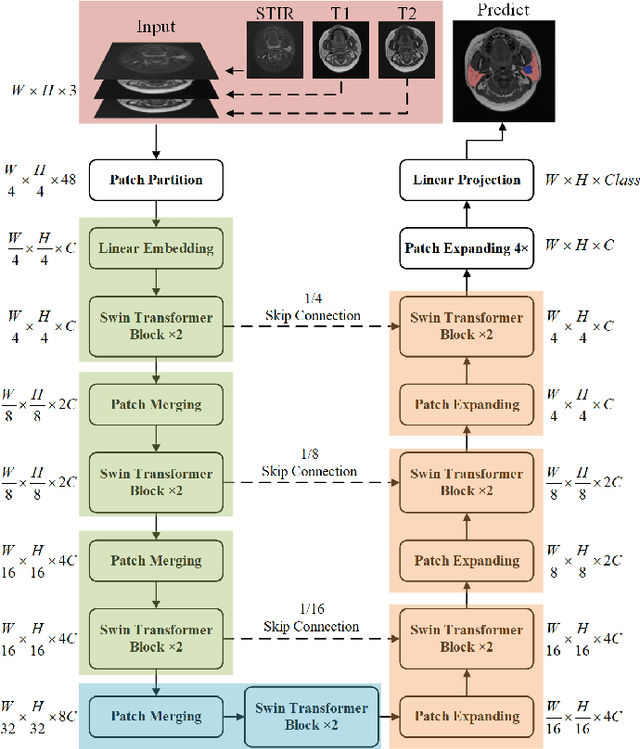
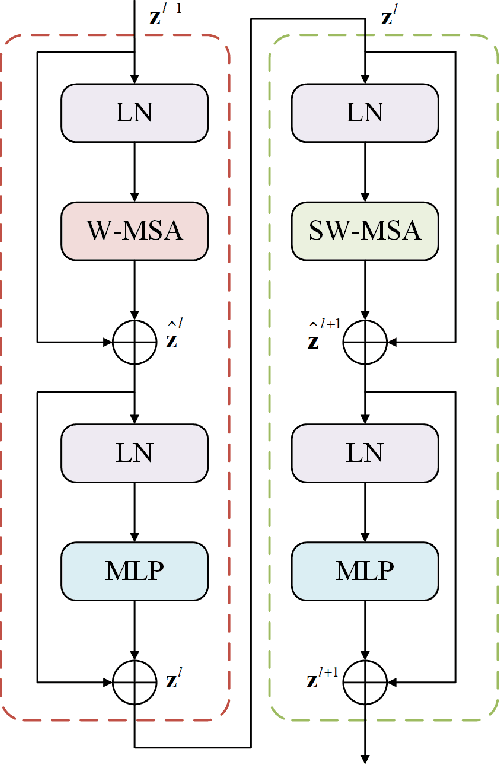

Abstract:Parotid gland tumors account for approximately 2% to 10% of head and neck tumors. Preoperative tumor localization, differential diagnosis, and subsequent selection of appropriate treatment for parotid gland tumors is critical. However, the relative rarity of these tumors and the highly dispersed tissue types have left an unmet need for a subtle differential diagnosis of such neoplastic lesions based on preoperative radiomics. Recently, deep learning methods have developed rapidly, especially Transformer beats the traditional convolutional neural network in computer vision. Many new Transformer-based networks have been proposed for computer vision tasks. In this study, multicenter multimodal parotid gland MRI images were collected. The Swin-Unet which was based on Transformer was used. MRI images of STIR, T1 and T2 modalities were combined into a three-channel data to train the network. We achieved segmentation of the region of interest for parotid gland and tumor. The DSC of the model on the test set was 88.63%, MPA was 99.31%, MIoU was 83.99%, and HD was 3.04. Then a series of comparison experiments were designed in this paper to further validate the segmentation performance of the algorithm.
 Add to Chrome
Add to Chrome Add to Firefox
Add to Firefox Add to Edge
Add to Edge